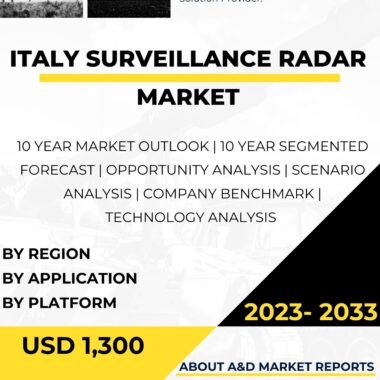Description
The Small Unmanned Aerial Vehicle (UAV) market in Malaysia has witnessed significant growth and development in recent years, reflecting the country’s commitment to enhancing its defense capabilities, civilian applications, and technological advancements. Small UAVs, also known as drones, play a crucial role in various sectors, including defense, agriculture, infrastructure inspection, environmental monitoring, and public safety. The adoption of advanced small UAV technologies enables Malaysia to establish a robust and modern UAV ecosystem, contributing to the country’s overall economic growth, security, and technological innovation.
As a nation with strategic geopolitical importance in Southeast Asia, Malaysia faces diverse challenges, including border surveillance, disaster response, wildlife conservation, and agricultural productivity. The use of advanced small UAVs enables Malaysia to address these challenges efficiently and effectively, making drones a valuable asset for both government and commercial sectors.
The Small UAV market in Malaysia has witnessed significant technological advancements. Modern small UAVs are equipped with advanced sensors, high-definition cameras, and sophisticated navigation systems, providing improved flight stability, longer endurance, and enhanced data collection capabilities. These advancements have expanded the applications of small UAVs, making them versatile tools for various industries and operations.
Moreover, small UAVs play a critical role in the Malaysian Armed Forces’ operational capabilities. The Malaysian Army, Royal Malaysian Navy, and Royal Malaysian Air Force utilize small UAVs for intelligence, surveillance, reconnaissance, and situational awareness. Drones provide a cost-effective and agile solution for border surveillance, counterterrorism operations, and monitoring of remote areas.
Additionally, small UAVs have revolutionized civilian applications in Malaysia. The agriculture sector uses drones for crop monitoring, pest detection, and precision agriculture, contributing to increased agricultural productivity and sustainable farming practices. Infrastructure inspection companies use UAVs for surveying, mapping, and monitoring of bridges, power lines, and pipelines, improving infrastructure maintenance and safety.
Furthermore, small UAVs have proven to be valuable tools for environmental monitoring and conservation efforts in Malaysia. Conservation organizations use drones to monitor wildlife, track endangered species, and survey forest areas, aiding in biodiversity conservation and protecting natural resources.
The adoption of small UAVs supports Malaysia’s commitment to enhancing its technological innovation and defense industrial base. The Malaysian government has shown interest in developing and manufacturing UAVs through local research and development (R&D) initiatives and partnerships with global drone manufacturers.
The Malaysian government has recognized the importance of international collaborations in acquiring and developing small UAV technologies. Partnerships with leading global UAV companies and technology providers have facilitated access to cutting-edge small UAVs and expertise. These collaborations have enabled technology transfer and capacity building, contributing to the growth of Malaysia’s domestic UAV capabilities.
While the Small UAV market in Malaysia shows promise, it is not without challenges. One of the primary hurdles is the need for comprehensive regulations and policies to govern UAV operations. The Malaysian government must establish clear guidelines for drone registration, flight restrictions, privacy protection, and safety measures to ensure responsible and secure UAV operations.
Moreover, ensuring skilled operators and proper training are essential for maximizing the benefits of small UAVs. The Malaysian Armed Forces, government agencies, and commercial operators must invest in continuous training and education to ensure their personnel possess the necessary expertise to operate small UAVs safely and effectively.
Additionally, promoting public awareness and acceptance of UAV technology is crucial. Educating the public about the benefits of drones while addressing concerns related to privacy, security, and safety will foster greater public support for UAV applications.
Looking ahead, the Small UAV market in Malaysia is poised for further growth. The government’s commitment to technological innovation, defense capabilities, and civilian applications will drive continued investments in small UAVs. As UAV technologies continue to evolve and demonstrate their effectiveness, they are likely to play an increasingly pivotal role in Malaysia’s economic growth, defense operations, and technological advancements.
Moreover, Malaysia’s participation in regional UAV collaborations and joint exercises will likely influence its small UAV requirements. As the country seeks to strengthen its position as a key player in regional UAV technology development and application, the demand for advanced small UAVs with interoperability and compatibility with allied forces will increase.
In conclusion, the Small UAV market in Malaysia has experienced significant growth and progress. The government’s focus on technological innovation, defense capabilities, and civilian applications has paved the way for the integration of modern UAVs into various sectors. International collaborations and domestic research efforts have positioned Malaysia as a participant in the global UAV technology landscape.
However, challenges related to regulations, training, public acceptance, and engineering expertise must be addressed proactively to sustain and enhance the growth of the Small UAV market in the years to come. By maintaining a modern and capable UAV ecosystem, Malaysia can effectively enhance its economic growth, security, and technological innovation.




